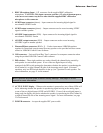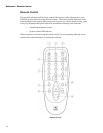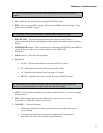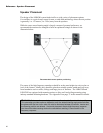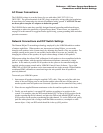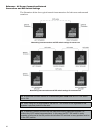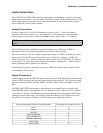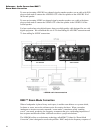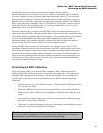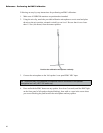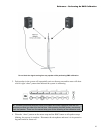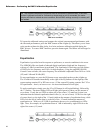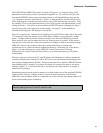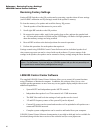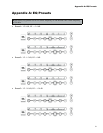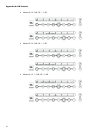
25
the speakers at the mix position and automatically applies corrective fi lters to
dramatically minimize low frequency resonances. Because room modes create resonance
at specifi c frequencies with very narrow bandwidths (sometimes called “Q”), the on-board
analyzer has the intelligence to identify the specifi c frequency and Q and apply a corrective
parametric fi lter to only the component of the signal that excites the problem. The LSR4300
RMC system can place a parametric fi lter at 73 frequencies (1/24th octave centers) between
20 Hz and 160 Hz, with a variable Q from 1 (1-2/5 octave bandwidth) to 16 (1/11 octave
bandwidth), with 3 to 12 dB of attenuation.
When the calibration mic is connected and the RMC analysis is initiated with the press of a
single button, the LSR4300’s onboard computer emits a reference tone that is measured at the
mix position using the supplied calibration microphone. The computer measures the response
received via the microphone and compares it with the original tone being emitted. It
determines which if any conditions should be corrected, and then calculates and applies a
corrective fi lter. The entire process takes only a few seconds per speaker.
During the RMC calibration process, the computer trims speaker levels in fi ne 0.25 dB
increments so that all speakers in the system produce equal SPL (sound pressure level) at the
mix position. This feature is particularly useful in surround sound applications where space
limitations often prevent optimum speaker placement. For example, if the center speaker is
closer to the mix position than the other main speakers, attenuation must be applied so your
mix balances are correct. Without this correction, your end product will sound unbalanced
on a properly calibrated playback system.
Performing An RMC Calibration
To get the benefi t of JBL’s revolutionary RMC technology, RMC calibration should be
performed The RMC calibration process is simple and easy, taking only a few moments to
complete. RMC settings remain in memory even after the speakers are powered down, so
typically the process only needs to be performed one time. RMC calibration should be
performed:
• The fi rst time you use your LSR4300 monitors. (The front panel RMC button will be
lit to remind you of that).
• When the LSR4300 monitors are relocated, repositioned, or moved into a different
listening space (either a different room altogether or a different area within the same
room).
• After any kind of change to the room’s acoustic treatment (such as adding carpeting,
bass traps, or other kinds of diffusers).
• When there is a signifi cant change to the room’s furnishings (such as adding a console
enclosure, a sofa, or other large piece of furniture).
RMC settings created in a prior environment are not relevant to the new environment.
If you do not wish to recalibrate the LSR4300 system after repositioning or moving one or
more speakers, press the RMC switch to bypass the existing settings.
Reference - RMC™ Room Mode Correction/
Performing An RMC Calibration



